Taonga finds new home within Ara | Te Pūkenga
Treasured artwork carved by esteemed master artist Cliff Whiting (Whānau-a-Apanui) is relocated thanks to the mahi of Kaitiaki Toi (Art Curator) Julie Humby, a team of expert installers and a conservator.

The magnificent Te Ao o Ngā Atua was originally carved to adorn the walls and inspire the people of Christchurch Polytechnic in the late-1980s. A taonga from a master craftsman whose strong connections with mana whenua informed the stories he transformed into art.
Now, thanks to the careful planning of Ara’s art curator Julie Humby, who enlisted the expertise of art installers and a 3D conservator, the Cliff Whiting piece has a more visible location in the heart of the Rakaia Centre on the City campus.
The completed project to move the work to its new home was marked by staff who gathered alongside it for Monday karakia this week.
“I’ve always been conscious that it’s been a little tucked away and out of sight,” Humby said, adding she was “thrilled beyond compare” with the new space.
“It is such a significant and beautiful artwork by a leading New Zealand Māori artist – I felt it would benefit from being in a location where more people would have the opportunity to appreciate it and realise it’s here on our City campus.”
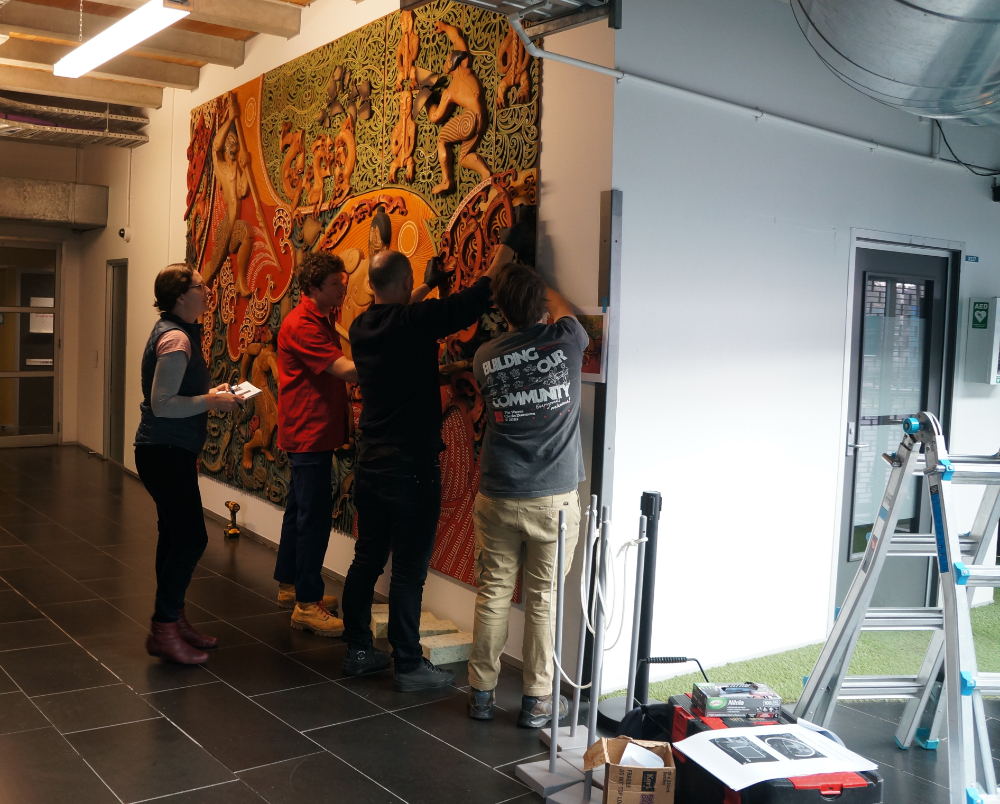
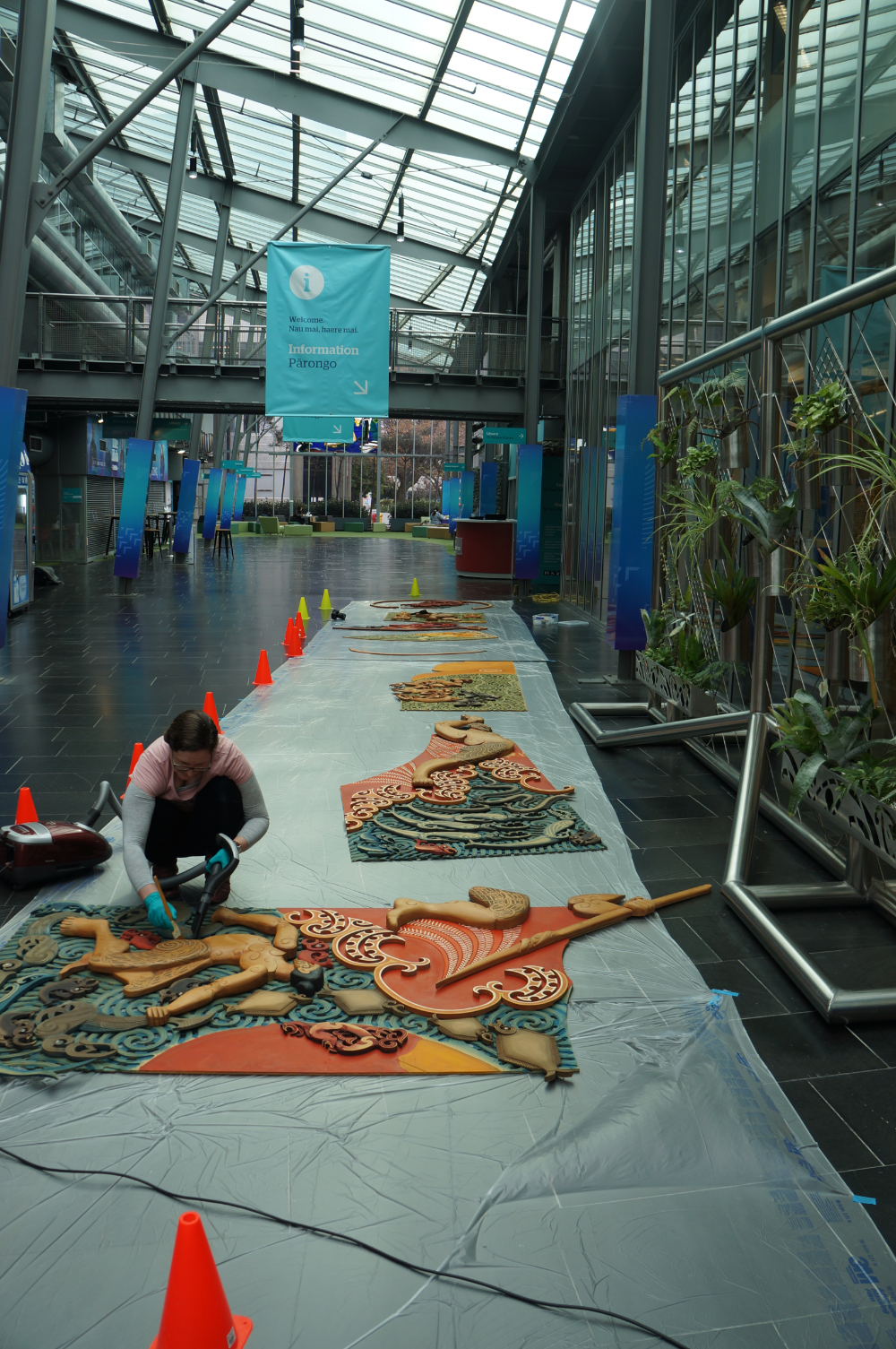
The work was deconstructed and cleaned by experts for the move.
“I think it has a chance to breathe and fill the space in its new location whereas it was quite limited in the place where it was previously situated,” Humby said.
Acknowledging the mahi of Humby, Ara | Te Pūkenga Department of Humanities kaimahi Reimana Tutengaehe agreed it was a significant day for several reasons.
“For one it’s an important piece by one of the most acknowledged Māori artists and secondly it tells the narrative of this particular area, this land and the people who descend from it,” he told those gathered.
“So, I hope that now lots of people will find joy or inspiration from seeing this taonga now more fully visible.”
The work depicts the creation stories of the South Island as conveyed to Cliff Whiting by local elder Raukura Gillies, an influential kuia at Rapaki, and other elders from within Ngāi Tahu.
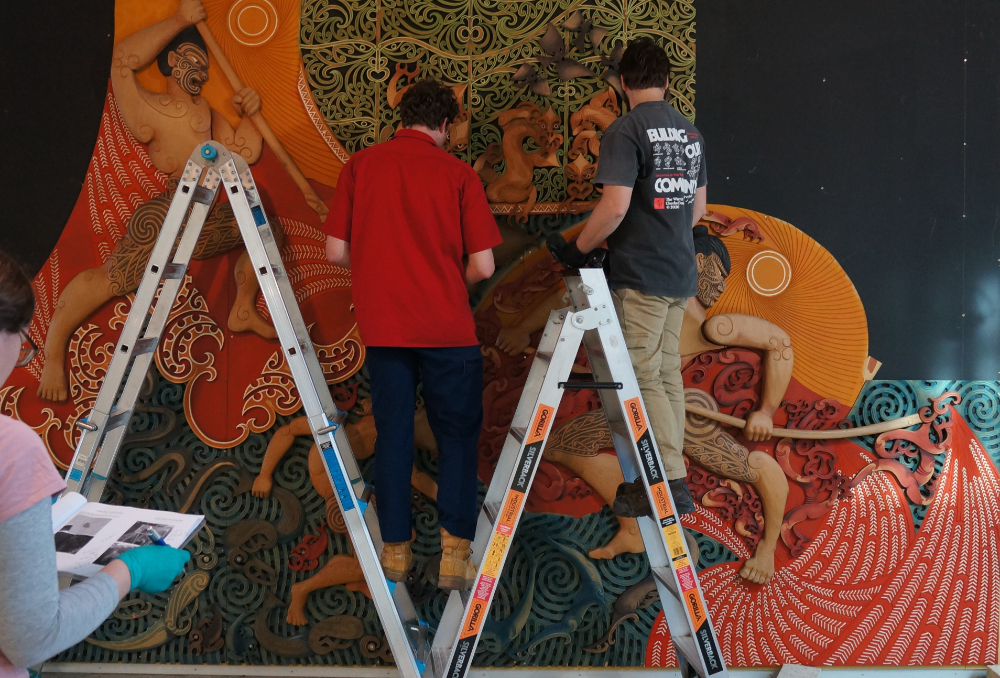
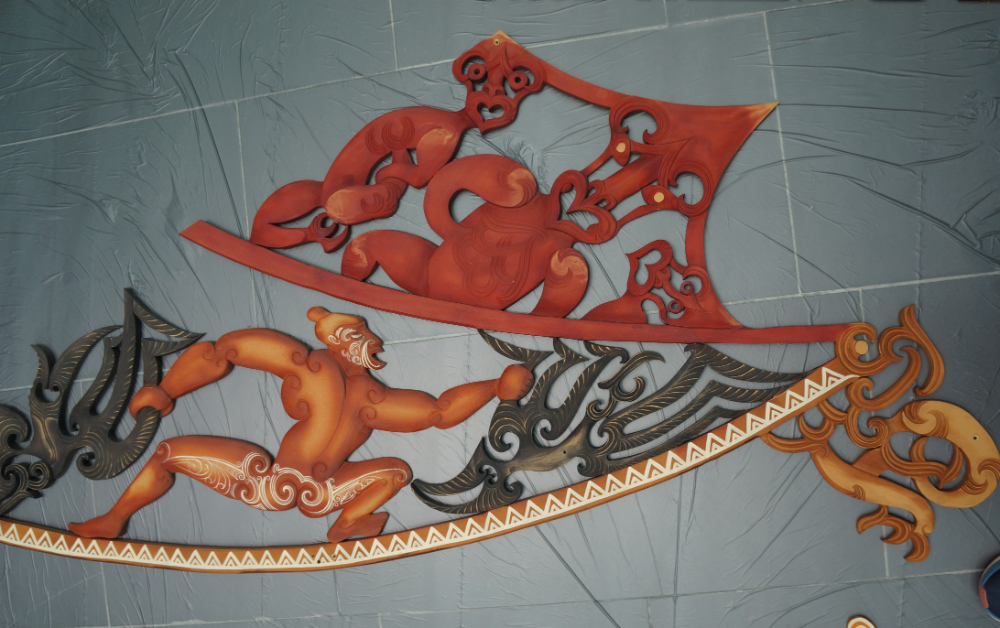
It features Aoraki and his young brothers, Te Rakihouia and his father Rākaihāutu as well as Marokura, the demi-god responsible for populating the waters with the many varieties of fish which can been seen intricately carved.
Kahukura, the deity responsible for creating the forests and populating them with birds is also depicted in the work. Māui’s canoe Mahunui can also be seen alongside the deity, Tūterakiwhānoa, responsible for carving out many South Island landscape features including Whakaraupō (Lyttelton Harbour) and Ngā Pākihi Whakatekateka o Waitaha (the Canterbury Plains).
“Cliff Whiting was a key Māori artist and educator,” Humby explained. “He worked in education encouraging the inclusion of Māori art in schools and also around the country helping to revitalise Māori culture through the restoration of marae. He was among the Māori artists whose impact on revitalisation of Māori art was incredibly significant.”
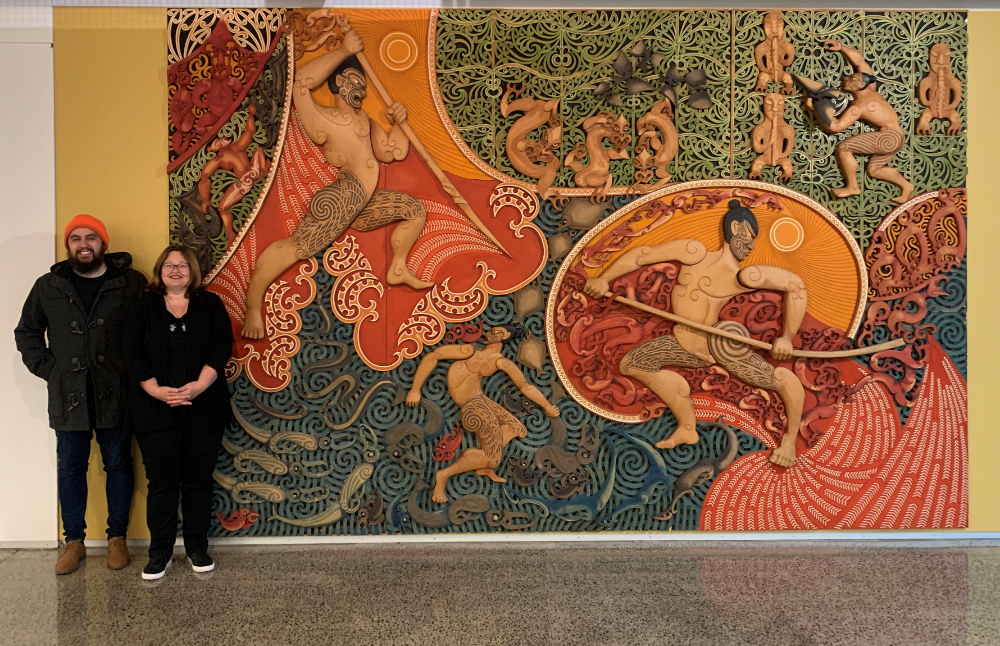
Department of Humanities Kaimahi Reimana Tutengaehe and Kaitiaki Toi (Art Curator) Julie Humby
The work was funded through a small grant from the Lotteries Commission but significantly - eighty percent of the funds came from staff, those connected with the institute and the wider Māori community at the time.
“So, as well as depicting that local narrative, it really is owned by the local community which is really inspiring,” Humby said.
Whether it’s the creation stories, the artist’s creative skill or to celebrate the creative thinking behind its relocation - be inspired to stop and admire Te Ao o Ngā Atua soon.